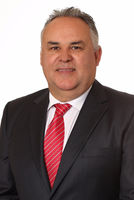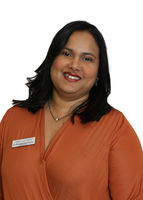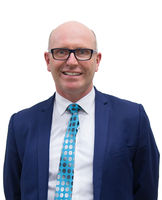Central Auckland, East Auckland, North Auckland, South Auckland, West Auckland > Private Hospitals & Specialists >
ACSS - Auckland City Surgical Services
Private Surgical Service, General Surgery, Breast, Obstetrics and Gynaecology, Orthopaedics, Plastic Surgery
Description
Welcome to Auckland City Surgical Services, a day-stay surgical unit with two state-of-the-art operating theatres and a two-stage recovery area.
Our surgeons and expert multi-disciplinary teams provide a wide range of surgical services and excellent post-operative care in a friendly, safe and comfortable environment.
Auckland City Surgical Services Ltd was established in 2006 and achieved accreditation with Quality Health NZ in 2007, recognising the quality of healthcare delivered and our commitment to continuous improvement.
Click on the link for patient care information including pre-admission, surgery and recovery details.
When you come for your surgery, please report to Ground Floor Reception.
Consultants
-

Dr Karen Buckingham
Obstetrician & Gynaecologist
-

Professor Cindy Farquhar
Obstetrician & Gynaecologist
-

Dr Guy Gudex
Obstetrician & Gynaecologist
-

Dr Devashana Gupta
Obstetrician & Gynaecologist
-

Professor Neil Johnson
Obstetrician & Gynaecologist
-

Mr Stephen Mills
Plastic & Reconstructive Surgeon
Services
What is Gynaecology? Gynaecology is the area of medicine that deals with health issues and conditions that are specific to women. This generally includes the female reproductive organs and genitalia. The reproductive organs consist of the ovaries that release an egg every month, the fallopian tubes that lead from the ovaries, the uterus (womb), which is where a baby will grow if the egg is fertilised during sexual intercourse, the cervix (opening of the uterus) and the vagina. Laparoscopy Many gynaeacological investigations are performed by laparoscopy. This is a procedure to view the inside of the abdomen (stomach) through a specially lit type of mini telescope (laparoscope) that is inserted through a small cut in the abdomen. The laparoscope also contains a small camera that sends pictures to a screen that the doctor can watch. Sometimes surgical procedures (keyhole surgery) can be performed at the same time. A laparoscopy is performed under a general anaesthetic (you are asleep).
What is Gynaecology? Gynaecology is the area of medicine that deals with health issues and conditions that are specific to women. This generally includes the female reproductive organs and genitalia. The reproductive organs consist of the ovaries that release an egg every month, the fallopian tubes that lead from the ovaries, the uterus (womb), which is where a baby will grow if the egg is fertilised during sexual intercourse, the cervix (opening of the uterus) and the vagina. Laparoscopy Many gynaeacological investigations are performed by laparoscopy. This is a procedure to view the inside of the abdomen (stomach) through a specially lit type of mini telescope (laparoscope) that is inserted through a small cut in the abdomen. The laparoscope also contains a small camera that sends pictures to a screen that the doctor can watch. Sometimes surgical procedures (keyhole surgery) can be performed at the same time. A laparoscopy is performed under a general anaesthetic (you are asleep).
What is Gynaecology?
Gynaecology is the area of medicine that deals with health issues and conditions that are specific to women. This generally includes the female reproductive organs and genitalia. The reproductive organs consist of the ovaries that release an egg every month, the fallopian tubes that lead from the ovaries, the uterus (womb), which is where a baby will grow if the egg is fertilised during sexual intercourse, the cervix (opening of the uterus) and the vagina.
Laparoscopy
Many gynaeacological investigations are performed by laparoscopy. This is a procedure to view the inside of the abdomen (stomach) through a specially lit type of mini telescope (laparoscope) that is inserted through a small cut in the abdomen. The laparoscope also contains a small camera that sends pictures to a screen that the doctor can watch. Sometimes surgical procedures (keyhole surgery) can be performed at the same time. A laparoscopy is performed under a general anaesthetic (you are asleep).
General surgery deals with a wide range of conditions within the abdomen, breast, neck, skin and vascular (blood vessel) system.
General surgery deals with a wide range of conditions within the abdomen, breast, neck, skin and vascular (blood vessel) system.
General surgery deals with a wide range of conditions within the abdomen, breast, neck, skin and vascular (blood vessel) system.
Breast Surgery This may be: Simple or Total: all breast tissue, skin and the nipple are surgically removed but the muscles lying under the breast and the lymph nodes are left in place. Modified Radical: all breast tissue, skin and the nipple as well as some lymph tissue are surgically removed. Partial: the breast lump and a portion of other breast tissue (up to one quarter of the breast) as well as lymph tissue are surgically removed. Lumpectomy: the breast lump and surrounding tissue, as well as some lymph tissue, are surgically removed. When combined with radiation treatment, this is known as breast-conserving surgery. Breast Reconstruction When a breast has been removed (mastectomy) because of cancer or other disease, it is possible in most cases to reconstruct a breast similar to a natural breast. A breast reconstruction can be performed as part of the breast removal operation or can be performed months or years later. There are two methods of breast reconstruction: one involves using an implant; the other uses tissue taken from another part of your body. There may be medical reasons why one of these methods is more suitable for you or, in other cases, you may be given a choice. Implants A silicone sack filled with either silicone gel or saline (salt water) is inserted underneath the chest muscle and skin. Before being inserted, the skin will sometimes need to be stretched to the required breast size. This is done by placing an empty bag where the implant will finally go, and gradually filling it with saline over weeks or months. The bag is then replaced by the implant in an operation that will probably take 2-3 hours under general anaesthesia (you will sleep through it). You will probably stay in hospital for 2-5 days. Flap Reconstruction A skin flap taken from another part of the body such as your back, stomach or buttocks, is used to reconstruct the breast. This is a more complicated operation than having an implant and may last up to 6 hours and require a 5- to 7-day stay in hospital. Breast Enlargement (Breast Augmentation) Surgery to increase breast size involves inserting silicone sacks (implants) filled with silicone gel or salt water (saline) under the chest muscle and skin. The procedure involves making a cut (incision) in the armpit, under the breast or around the areola (the dark area around the nipple) from where the implant is inserted. The surgery is usually performed under general anaesthesia (you will sleep through it) and it will probably take 1–2 hours. You will probably be able to go home the day of the operation, but you will need to arrange for someone else to drive you. You may need to take some medication for pain relief for 2-3 days and you should rest for a few days after the surgery. You will probably be able to return to work after 7-10 days. It will take several months for the scars to fade. Breast Lift This is an operation that can lift and reshape sagging breasts. The procedure usually involves removing skin from an area below the nipple and reshaping the breast. The surgery is performed under general anaesthesia (you will sleep through it) and will take about 2 hours. You will probably stay in hospital overnight and will need to arrange for someone else to drive you home the next day. Your breasts will be bruised and swollen for several days and you may need to take some medication for pain relief. You will need to wear a special support bra continuously for 3-4 weeks after surgery. You will probably be able to return to work after about 1 week. It will take several months for the scars to fade. Breast Reduction Surgery to reduce breast size involves making a cut (incision) around the areola (the dark area around the nipple) straight downwards and along the crease beneath the breast. Glandular tissue, fat and skin are removed and the breast reshaped. The surgery is performed under general anaesthesia (you will sleep through it) and will take 2-4 hours. You will probably stay in hospital 1-2 nights and will need to arrange for someone else to drive you home. You may need to take some medication for pain relief for several days and you must wear a special support bra continuously for 2 weeks after surgery. You will probably be able to return to work after about 2 weeks. It will take several months for the scars to fade.
Breast Surgery This may be: Simple or Total: all breast tissue, skin and the nipple are surgically removed but the muscles lying under the breast and the lymph nodes are left in place. Modified Radical: all breast tissue, skin and the nipple as well as some lymph tissue are surgically removed. Partial: the breast lump and a portion of other breast tissue (up to one quarter of the breast) as well as lymph tissue are surgically removed. Lumpectomy: the breast lump and surrounding tissue, as well as some lymph tissue, are surgically removed. When combined with radiation treatment, this is known as breast-conserving surgery. Breast Reconstruction When a breast has been removed (mastectomy) because of cancer or other disease, it is possible in most cases to reconstruct a breast similar to a natural breast. A breast reconstruction can be performed as part of the breast removal operation or can be performed months or years later. There are two methods of breast reconstruction: one involves using an implant; the other uses tissue taken from another part of your body. There may be medical reasons why one of these methods is more suitable for you or, in other cases, you may be given a choice. Implants A silicone sack filled with either silicone gel or saline (salt water) is inserted underneath the chest muscle and skin. Before being inserted, the skin will sometimes need to be stretched to the required breast size. This is done by placing an empty bag where the implant will finally go, and gradually filling it with saline over weeks or months. The bag is then replaced by the implant in an operation that will probably take 2-3 hours under general anaesthesia (you will sleep through it). You will probably stay in hospital for 2-5 days. Flap Reconstruction A skin flap taken from another part of the body such as your back, stomach or buttocks, is used to reconstruct the breast. This is a more complicated operation than having an implant and may last up to 6 hours and require a 5- to 7-day stay in hospital. Breast Enlargement (Breast Augmentation) Surgery to increase breast size involves inserting silicone sacks (implants) filled with silicone gel or salt water (saline) under the chest muscle and skin. The procedure involves making a cut (incision) in the armpit, under the breast or around the areola (the dark area around the nipple) from where the implant is inserted. The surgery is usually performed under general anaesthesia (you will sleep through it) and it will probably take 1–2 hours. You will probably be able to go home the day of the operation, but you will need to arrange for someone else to drive you. You may need to take some medication for pain relief for 2-3 days and you should rest for a few days after the surgery. You will probably be able to return to work after 7-10 days. It will take several months for the scars to fade. Breast Lift This is an operation that can lift and reshape sagging breasts. The procedure usually involves removing skin from an area below the nipple and reshaping the breast. The surgery is performed under general anaesthesia (you will sleep through it) and will take about 2 hours. You will probably stay in hospital overnight and will need to arrange for someone else to drive you home the next day. Your breasts will be bruised and swollen for several days and you may need to take some medication for pain relief. You will need to wear a special support bra continuously for 3-4 weeks after surgery. You will probably be able to return to work after about 1 week. It will take several months for the scars to fade. Breast Reduction Surgery to reduce breast size involves making a cut (incision) around the areola (the dark area around the nipple) straight downwards and along the crease beneath the breast. Glandular tissue, fat and skin are removed and the breast reshaped. The surgery is performed under general anaesthesia (you will sleep through it) and will take 2-4 hours. You will probably stay in hospital 1-2 nights and will need to arrange for someone else to drive you home. You may need to take some medication for pain relief for several days and you must wear a special support bra continuously for 2 weeks after surgery. You will probably be able to return to work after about 2 weeks. It will take several months for the scars to fade.
Breast Surgery
This may be:
- Simple or Total: all breast tissue, skin and the nipple are surgically removed but the muscles lying under the breast and the lymph nodes are left in place.
- Modified Radical: all breast tissue, skin and the nipple as well as some lymph tissue are surgically removed.
- Partial: the breast lump and a portion of other breast tissue (up to one quarter of the breast) as well as lymph tissue are surgically removed.
- Lumpectomy: the breast lump and surrounding tissue, as well as some lymph tissue, are surgically removed. When combined with radiation treatment, this is known as breast-conserving surgery.
Breast Reconstruction
When a breast has been removed (mastectomy) because of cancer or other disease, it is possible in most cases to reconstruct a breast similar to a natural breast. A breast reconstruction can be performed as part of the breast removal operation or can be performed months or years later.
There are two methods of breast reconstruction: one involves using an implant; the other uses tissue taken from another part of your body. There may be medical reasons why one of these methods is more suitable for you or, in other cases, you may be given a choice.
Implants
A silicone sack filled with either silicone gel or saline (salt water) is inserted underneath the chest muscle and skin. Before being inserted, the skin will sometimes need to be stretched to the required breast size. This is done by placing an empty bag where the implant will finally go, and gradually filling it with saline over weeks or months. The bag is then replaced by the implant in an operation that will probably take 2-3 hours under general anaesthesia (you will sleep through it). You will probably stay in hospital for 2-5 days.
Flap Reconstruction
A skin flap taken from another part of the body such as your back, stomach or buttocks, is used to reconstruct the breast. This is a more complicated operation than having an implant and may last up to 6 hours and require a 5- to 7-day stay in hospital.
Breast Enlargement (Breast Augmentation)
Surgery to increase breast size involves inserting silicone sacks (implants) filled with silicone gel or salt water (saline) under the chest muscle and skin.
The procedure involves making a cut (incision) in the armpit, under the breast or around the areola (the dark area around the nipple) from where the implant is inserted. The surgery is usually performed under general anaesthesia (you will sleep through it) and it will probably take 1–2 hours. You will probably be able to go home the day of the operation, but you will need to arrange for someone else to drive you.
You may need to take some medication for pain relief for 2-3 days and you should rest for a few days after the surgery. You will probably be able to return to work after 7-10 days. It will take several months for the scars to fade.
Breast Lift
This is an operation that can lift and reshape sagging breasts.
The procedure usually involves removing skin from an area below the nipple and reshaping the breast. The surgery is performed under general anaesthesia (you will sleep through it) and will take about 2 hours. You will probably stay in hospital overnight and will need to arrange for someone else to drive you home the next day.
Your breasts will be bruised and swollen for several days and you may need to take some medication for pain relief. You will need to wear a special support bra continuously for 3-4 weeks after surgery. You will probably be able to return to work after about 1 week. It will take several months for the scars to fade.
Breast Reduction
Surgery to reduce breast size involves making a cut (incision) around the areola (the dark area around the nipple) straight downwards and along the crease beneath the breast. Glandular tissue, fat and skin are removed and the breast reshaped. The surgery is performed under general anaesthesia (you will sleep through it) and will take 2-4 hours. You will probably stay in hospital 1-2 nights and will need to arrange for someone else to drive you home.
You may need to take some medication for pain relief for several days and you must wear a special support bra continuously for 2 weeks after surgery. You will probably be able to return to work after about 2 weeks. It will take several months for the scars to fade.
What is Plastic Surgery? Plastic surgery covers a wide range of different surgical procedures that repair, reconstruct or replace structures in many different parts of the body including the skin, face and head, hands, breast and stomach. Plastic surgery does not involve the use of plastic materials. Plastic surgery can generally be divided into two main types: Reconstructive surgery: is performed on parts of the body that are abnormal or have been affected by a birth defect, accident or disease. This includes cleft lip and palate repair, scar revision or reconstruction (including skin grafts) following burns. Surgery is usually performed to improve function, but may also be performed to bring the appearance of a part of the body as close as possible to normal. Aesthetic or cosmetic surgery: improves appearance or body image by reshaping features of the face or body e.g. breast enlargement, face lift, liposuction.
What is Plastic Surgery? Plastic surgery covers a wide range of different surgical procedures that repair, reconstruct or replace structures in many different parts of the body including the skin, face and head, hands, breast and stomach. Plastic surgery does not involve the use of plastic materials. Plastic surgery can generally be divided into two main types: Reconstructive surgery: is performed on parts of the body that are abnormal or have been affected by a birth defect, accident or disease. This includes cleft lip and palate repair, scar revision or reconstruction (including skin grafts) following burns. Surgery is usually performed to improve function, but may also be performed to bring the appearance of a part of the body as close as possible to normal. Aesthetic or cosmetic surgery: improves appearance or body image by reshaping features of the face or body e.g. breast enlargement, face lift, liposuction.
What is Plastic Surgery?
Plastic surgery covers a wide range of different surgical procedures that repair, reconstruct or replace structures in many different parts of the body including the skin, face and head, hands, breast and stomach. Plastic surgery does not involve the use of plastic materials.
Plastic surgery can generally be divided into two main types:
- Reconstructive surgery: is performed on parts of the body that are abnormal or have been affected by a birth defect, accident or disease. This includes cleft lip and palate repair, scar revision or reconstruction (including skin grafts) following burns. Surgery is usually performed to improve function, but may also be performed to bring the appearance of a part of the body as close as possible to normal.
- Aesthetic or cosmetic surgery: improves appearance or body image by reshaping features of the face or body e.g. breast enlargement, face lift, liposuction.
Problems with the appearance or function of the hand can be the result of injury, birth defects or degenerative conditions. Carpal Tunnel Syndrome A pinched nerve in the wrist that causes tingling, numbness and pain in your hand may require surgery to make more room for the nerve. This operation is usually performed under local anaesthetic (the area being treated is numb but you are awake). Arthritis Arthritis is a condition in which a joint and the surrounding tissue become swollen and painful. If surgery is necessary, it may involve replacement of the joint with an artificial joint or removal or repair of swollen or damaged tissue.
Problems with the appearance or function of the hand can be the result of injury, birth defects or degenerative conditions. Carpal Tunnel Syndrome A pinched nerve in the wrist that causes tingling, numbness and pain in your hand may require surgery to make more room for the nerve. This operation is usually performed under local anaesthetic (the area being treated is numb but you are awake). Arthritis Arthritis is a condition in which a joint and the surrounding tissue become swollen and painful. If surgery is necessary, it may involve replacement of the joint with an artificial joint or removal or repair of swollen or damaged tissue.
Problems with the appearance or function of the hand can be the result of injury, birth defects or degenerative conditions.
Travel Directions
We are located on Remuera Road between St Marks Road and Dilworth Avenue, on the right hand side heading up Remuera Road.
Parking
Five minute patient pick up/drop off parking is available on site.
Pharmacy
Website
Contact Details
105 Remuera Road, Remuera, Auckland
Central Auckland
-
Phone
(09) 524 1220
-
Fax
(09) 524 1224
Healthlink EDI
aklgynae
Email
Website
105 Remuera Road
Remuera
Auckland
Street Address
105 Remuera Road
Remuera
Auckland
Postal Address
PO Box 10 9017
Newmarket
Auckland 1149
Was this page helpful?
This page was last updated at 8:19AM on December 6, 2023. This information is reviewed and edited by ACSS - Auckland City Surgical Services.

